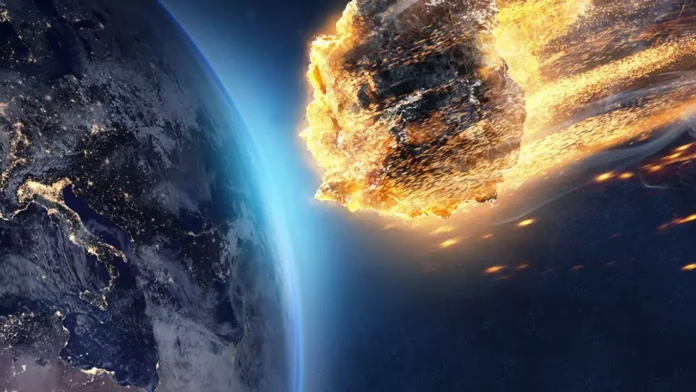NASA has issued an alert about a massive asteroid, approximately 190 feet wide, which is set to pass by Earth at a close distance today. This near-Earth object (NEO), comparable in size to a commercial aircraft, is drawing attention due to its proximity and potential impact risk. Although NASA has assured that there is no immediate threat, the close flyby has reignited discussions about the importance of monitoring asteroids and preparing for possible future encounters with these space rocks.
What We Know About the Approaching Asteroid?
NASA’s Center for Near-Earth Object Studies (CNEOS) has been tracking this 190-foot asteroid, which has been classified as a “potentially hazardous object” due to its size and close approach distance. The asteroid is expected to pass within a range that NASA considers noteworthy, but still far enough to avoid a collision with Earth. NASA monitors thousands of such objects each year to predict their paths and assess any risks they might pose.
This specific asteroid is moving at a remarkable speed as it approaches Earth, underscoring the need for continual monitoring of space rocks that orbit close to our planet. Objects of this size, if they were to collide with Earth, could cause significant regional damage. While this particular asteroid is not on a collision course, NASA’s alert highlights how crucial it is to keep an eye on NEOs.

NASA’s Near-Earth Object Monitoring System
NASA has a dedicated system to track and study asteroids that come near Earth’s orbit. The Planetary Defense Coordination Office (PDCO) oversees the detection and tracking of near-Earth objects, particularly those that are over 140 meters (460 feet) in diameter, as they have the potential to cause considerable damage if they impact Earth. Smaller objects like this 190-foot asteroid are also closely watched due to their potential for regional impact.
By using advanced telescopes and radar, NASA’s monitoring systems calculate the paths of these objects to predict if any might collide with Earth in the future. The agency works closely with global partners and shares findings to improve international readiness for potential asteroid impacts.
Why This Asteroid’s Flyby Matters?
Although NASA has assured the public that this asteroid does not pose a threat, close approaches by large space rocks offer valuable learning opportunities. These flybys allow scientists to study the asteroid’s size, shape, rotation, and composition, which can provide insights into the formation and behavior of NEOs. Observations made during close encounters contribute to NASA’s understanding of these objects and enhance predictive models for tracking potential impact threats.

The Importance of Preparedness and Planetary Defense
Events like today’s close flyby serve as reminders of the need for planetary defense measures. NASA and other space agencies around the world are actively researching methods to deflect or destroy hazardous asteroids that might pose a real threat in the future. Technologies like the DART (Double Asteroid Redirection Test) mission are being tested to see if human intervention could alter the trajectory of a potentially dangerous asteroid.
NASA’s DART mission, which successfully changed the orbit of an asteroid moonlet in 2022, demonstrated that it is possible to slightly shift an asteroid’s path using a kinetic impactor. This success has paved the way for future missions that could help humanity avoid collisions with larger and more dangerous NEOs.

Historical Context: Notable Asteroid Encounters
Throughout history, Earth has encountered asteroids of various sizes, some with devastating consequences. The Tunguska event in 1908, for example, saw a small asteroid or comet explode over Siberia, flattening 800 square miles of forest. While rare, these events highlight the potential dangers of asteroid impacts.
More recently, in 2013, a meteor exploded over Chelyabinsk, Russia, injuring over 1,500 people due to the resulting shockwave. Incidents like these underscore the importance of early detection and tracking systems to mitigate the risks posed by these celestial objects.
Conclusion: Staying Vigilant for Future Approaches
While the 190-foot asteroid passing Earth today poses no immediate threat, NASA’s alert is a reminder of the importance of vigilance in monitoring near-Earth objects. As we continue to track these space rocks, each close encounter offers new data that could be crucial for future planetary defense strategies. With ongoing technological advancements, humanity is better equipped than ever to detect and, if necessary, deflect potential threats from space, ensuring that Earth remains safe from asteroid impacts.
NASA’s dedication to monitoring and understanding NEOs is essential in safeguarding our planet. As the agency continues its research and development in planetary defense, future generations can feel more secure knowing that steps are being taken to protect Earth from possible asteroid collisions.

